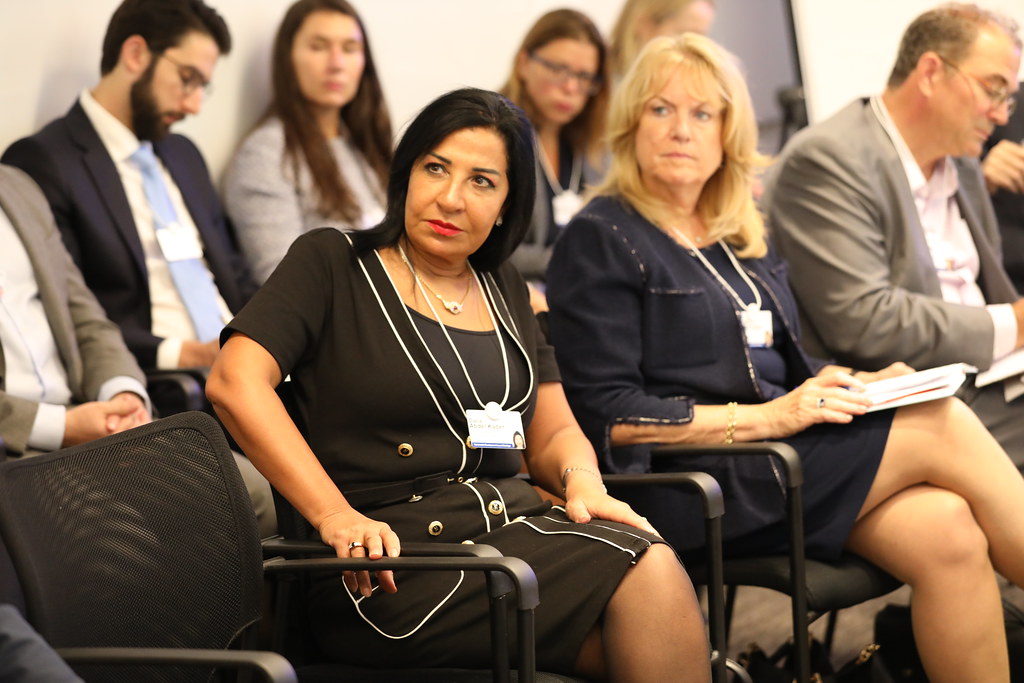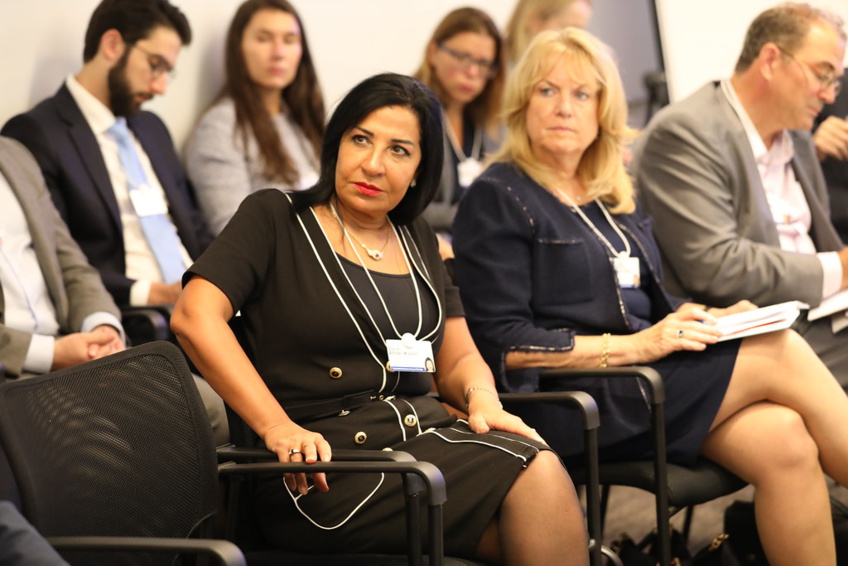Autumn is a bustling period for professionals in various sectors, filled with numerous conferences, panels, webinars, and events. The climate sector is no exception, with Climate Week NYC kicking off the season with an unparalleled attendance, followed by VERGE in San Jose, and ending with COP28.
The extensive dialogues and discussions in this field have left me feeling hopeful. This optimism stems from the multitude of climate conversations that tackled specific issues, emphasized immediate action, and sought to simplify the often complex jargon to answer the vital question: “What exactly are we going to do about it?” Some of the main sentiments, discussions, and questions that were examined include:
The extensive dialogues and discussions in this field have left me feeling hopeful. This optimism stems from the multitude of climate conversations that tackled specific issues, emphasized immediate action, and sought to simplify the often complex jargon to answer the vital question: “What exactly are we going to do about it?” Some of the main sentiments, discussions, and questions that were examined include:
- The importance of nature in achieving “Net Zero”: For a while now, climate action has been equated with carbon reduction. To accomplish this, we frequently resort to developing new, more sustainable, efficient technologies. However, a holistic carbon strategy encompasses solutions to decrease carbon emissions, extract carbon from the atmosphere, and safeguard or conserve natural carbon sinks. In recent years, the emphasis has largely been on reducing emissions and engineered carbon removal. But this year’s events witnessed a wave of participants and capital providers who were knowledgeable, eager, and prepared to ensure that nature-based solutions, as well as the preservation and restoration of nature, were not just part of strategic discussions but were leading them.
- How do marginalized communities interpret a “Just Energy Transition”?: The crossroads of inclusion and clean energy is a shared interest in the climate space. However, this intersection is often assigned a jargon-heavy title that we see frequently in projects, strategies, and discussions. As this title became more prevalent, I found myself wondering whether we, the diverse climate community and the public, truly share a comprehensive understanding of what this phrase means and whether it still represents the voices of marginalized communities. Reflecting on this, I sought the interpretations of this phrase from a local Indigenous leader from Arizona and an inner-city community leader from New York City. Their unique insights on the same topic were enlightening and refreshing. Nantu Canelos, Director of Territorial Autonomy of Cisco Foundation grantee, Kara Solar, also shared their thoughts on the topic, stating that in remote communities of the Amazon rainforest, such as the Achuar territory where they live, the transition is from gasoline to solar energy, and from having no energy to having energy. They use solar energy for transportation, communication, lighting, and other purposes.
Energy is perceived as a tool to improve the standard of living for our people and to lessen the burden on the ecosystems we inhabit and depend on, which in turn further improves human life, forming a beneficial cycle. When dealing with technologies, the emphasis is on promoting local comprehension. Local technicians undergo training, and solar energy is integrated into the school curriculum, enabling children to learn about it from a young age. This ensures that the benefits are long-lasting and that this energy transition is truly fair.
In an informal conversation, another climate enthusiast expressed appreciation for publicly posing this question and shared that she too had been contemplating the intention and reality behind our most frequently used climate jargon. It was clear that people were questioning, redefining, or even looking beyond the jargon, particularly those encapsulating themes of justice and inclusion.
Conversations about climate finance continue to progress, acknowledging the unique capital stack needed to reverse the effects of climate change. This week’s discussions did not focus on “what” we need and “why”, but rather dissected and challenged capital providers of all kinds to think about “how”. For example, corporate climate financiers like Salesforce released The Corporate Climate Finance Playbook during Climate Week NYC.
Additionally, the Global Innovation Lab for Climate Finance (the Lab) endorsed six innovative financial instruments to accelerate climate action in emerging markets, including Cisco Foundation investee, The Catalyst Fund. Maelis Carraro, Managing Partner of Catalyst Fund, elaborates on their approach to putting this call to action into practice, stating that the Catalyst Fund was intentionally designed as a blended finance structure so that a concessionary capital layer could provide downside risk protection for senior investors and catalyze more private investment in climate adaptation and resilience in Africa.
This type of structure can be incredibly effective in leveraging multiple types of capital (concessionary and commercial) to invest in emerging sectors, underserved and frontier markets, and unlocking benefits for underserved communities. Climate resilience and climate tech in Africa remain a nascent asset class, and they were proud to be endorsed by the CPI Lab as one of this year’s most innovative instruments for climate adaptation. We cannot achieve “breakthroughs” in Climate Tech without recognizing the challenging landscape of Climate Hardware.
The 2020 International Energy Agency’s Clean Energy Innovation perspectives report indicates that nearly 35% of the reductions required to prevent a 2 degree C temperature rise must come from technologies that are currently at the prototype or demonstration phase. These technologies will not be available at scale without additional R&D. Roughly 40% of the cumulative emissions reductions depend on technologies that have not yet been commercially deployed in mass market applications.
This calls for new hardware innovation, a sector characterized by substantial capital requirements, extended time frames, and a high level of technological risk. The creation of these hardware breakthroughs will require a diverse capital stack provided by capital providers, as well as potentially a new investment model. Azolla Ventures is an innovative investment fund attempting to tackle this issue. Matthew Nordan, General Partner at Azolla Ventures, states,
“To avoid the most catastrophic impacts of climate change, we have to pair both emissions reduction and carbon removal at mass scale. We’re not going to forestall climate catastrophe solely with the technologies that exist and are ready now such as solar, wind, short-duration energy storage, and electric vehicles. We need new innovations that are neither developed nor deployed today. There is some irony that the innovations that are most potentially impactful are often the ones least likely to be financed at the earliest stages because the risk is so high and the time frame is so long; our approach is purpose-built to fill this gap.”
These points were not only made by Azolla Ventures during this conference season, but also in climate tech roundtables and presentations from other investors like Third Sphere. As we continue to finance solutions through the Cisco Foundation Climate Commitment, these discussions and progress in how we think about the solutions we need and how to finance them are crucial to our success in playing our part in driving climate action. We are excited, motivated, and inspired to continue to co-learn, support, and collectively act alongside a variety of innovators, capital providers, ecosystem builders, and visionaries to build a more sustainable and regenerative future.
In an informal conversation, another climate enthusiast expressed appreciation for publicly posing this question and shared that she too had been contemplating the intention and reality behind our most frequently used climate jargon. It was clear that people were questioning, redefining, or even looking beyond the jargon, particularly those encapsulating themes of justice and inclusion.
Conversations about climate finance continue to progress, acknowledging the unique capital stack needed to reverse the effects of climate change. This week’s discussions did not focus on “what” we need and “why”, but rather dissected and challenged capital providers of all kinds to think about “how”. For example, corporate climate financiers like Salesforce released The Corporate Climate Finance Playbook during Climate Week NYC.
Additionally, the Global Innovation Lab for Climate Finance (the Lab) endorsed six innovative financial instruments to accelerate climate action in emerging markets, including Cisco Foundation investee, The Catalyst Fund. Maelis Carraro, Managing Partner of Catalyst Fund, elaborates on their approach to putting this call to action into practice, stating that the Catalyst Fund was intentionally designed as a blended finance structure so that a concessionary capital layer could provide downside risk protection for senior investors and catalyze more private investment in climate adaptation and resilience in Africa.
This type of structure can be incredibly effective in leveraging multiple types of capital (concessionary and commercial) to invest in emerging sectors, underserved and frontier markets, and unlocking benefits for underserved communities. Climate resilience and climate tech in Africa remain a nascent asset class, and they were proud to be endorsed by the CPI Lab as one of this year’s most innovative instruments for climate adaptation. We cannot achieve “breakthroughs” in Climate Tech without recognizing the challenging landscape of Climate Hardware.
The 2020 International Energy Agency’s Clean Energy Innovation perspectives report indicates that nearly 35% of the reductions required to prevent a 2 degree C temperature rise must come from technologies that are currently at the prototype or demonstration phase. These technologies will not be available at scale without additional R&D. Roughly 40% of the cumulative emissions reductions depend on technologies that have not yet been commercially deployed in mass market applications.
This calls for new hardware innovation, a sector characterized by substantial capital requirements, extended time frames, and a high level of technological risk. The creation of these hardware breakthroughs will require a diverse capital stack provided by capital providers, as well as potentially a new investment model. Azolla Ventures is an innovative investment fund attempting to tackle this issue. Matthew Nordan, General Partner at Azolla Ventures, states,
“To avoid the most catastrophic impacts of climate change, we have to pair both emissions reduction and carbon removal at mass scale. We’re not going to forestall climate catastrophe solely with the technologies that exist and are ready now such as solar, wind, short-duration energy storage, and electric vehicles. We need new innovations that are neither developed nor deployed today. There is some irony that the innovations that are most potentially impactful are often the ones least likely to be financed at the earliest stages because the risk is so high and the time frame is so long; our approach is purpose-built to fill this gap.”
These points were not only made by Azolla Ventures during this conference season, but also in climate tech roundtables and presentations from other investors like Third Sphere. As we continue to finance solutions through the Cisco Foundation Climate Commitment, these discussions and progress in how we think about the solutions we need and how to finance them are crucial to our success in playing our part in driving climate action. We are excited, motivated, and inspired to continue to co-learn, support, and collectively act alongside a variety of innovators, capital providers, ecosystem builders, and visionaries to build a more sustainable and regenerative future.


 Driving Climate Action: Innovations and Financing for a Sustainable Future
Driving Climate Action: Innovations and Financing for a Sustainable Future





 Companies
Companies